Click on images to enlarge
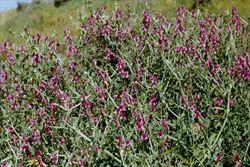
infestation (Photo: Trevor James)
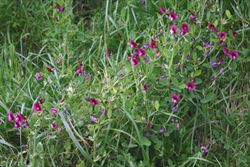
habit (Photo: Trevor James)
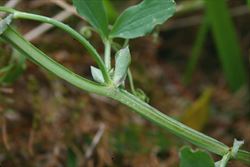
winged stem with leafy stipules at the base of each leaf stalk (Photo: Trevor James)
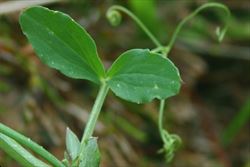
leaf with two leaflets and three-branched tendril (Photo: Trevor James)
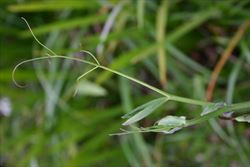
young leaf with five-branched tendril (Photo: Trevor James)
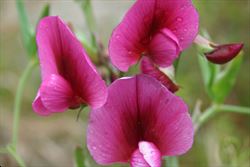
pea-shaped flowers (Photo: Trevor James)
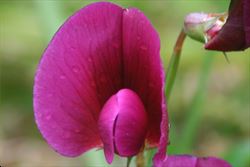
close-up of flower (Photo: Trevor James)
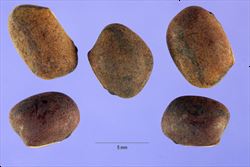
close-up of seeds (Photo: Steve Hurst at USDA PLANTS Database)
Scientific Name
Lathyrus tingitanus L.
Synonyms
Lathyrus latifolius L. (misapplied)
Family
Fabaceae (Queensland, the ACT, Victoria, Tasmania, and the Northern Territory)Fabaceae: sub-family Faboideae (New South Wales)Leguminosae (South Australia)Papilionaceae (Western Australia)
Common Names
Tangier pea, Tangier peavine, Tangier scarlet pea
Origin
Native to north-western Africa (i.e. northern Algeria and Morocco), the Azores, the Madeira Islands, the Canary Islands and parts of south-western Europe (i.e. Sardinia, Portugal and southern and eastern Spain).
Naturalised Distribution
Widely naturalised in southern Australia (i.e. in southern Victoria, Tasmania, south-eastern South Australia and south-western Western Australia). Also occasionally naturalised in south-eastern Queensland and in the coastal and sub-coastal districts of central and southern New South Wales.
Naturalised overseas in western USA (i.e. California, Oregon, Washington, Idaho and Utah), New Zealand and Hawaii.
Notes
Tangier pea (Lathyrus tingitanus) is regarded as an environmental weed in South Australia, Tasmania, Victoria, New South Wales and Western Australia. This garden escape grows on hillsides, riverbanks and creekbanks, along tracks and roadsides, in disturbed sites and bare areas, and in disturbed and undisturbed natural vegetation.
This species is currently of most concern in south-eastern South Australia. Tangier pea (Lathyrus tingitanus) is a common weed of the Adelaide region, where it is established in natural habitats such as grasslands and open woodlands. It is regarded as an invasive plant by some local councils (e.g. Adelaide Hills Council and the City of Mitcham) and has also been recorded in several conservation areas in this region (e.g. Sturt Gorge Recreation Park, Cudlee Creek Conservation Park, Brownhill Creek Recreation Park and Para Wirra Recreation Park). This species is also relatively common and widespread in Victoria and, while generally of less concern in this state, it is regarded as an environmental weed in some areas (e.g. in the Shire of Yarra Ranges).
Tangier pea (Lathyrus tingitanus) is also a weed of tall shrublands and grasslands between Perth and Albany in south-western Western Australia, but is currently regarded as a low priority environmental weed in this state. However, it is increasing rapidly on roadsides and in other disturbed habitats in the Darling Ranges and creates a fire hazard when it dies back in summer.
This species has also been recorded from shrubby eucalypt woodland in New South Wales, particularly in the Central Tablelands region. It is likely to become a more widespread environmental weed in New South Wales and is listed among the "exotic vines and scramblers" whose invasion of native ecosystems is regarded as being a "key threatening process" in this state.

